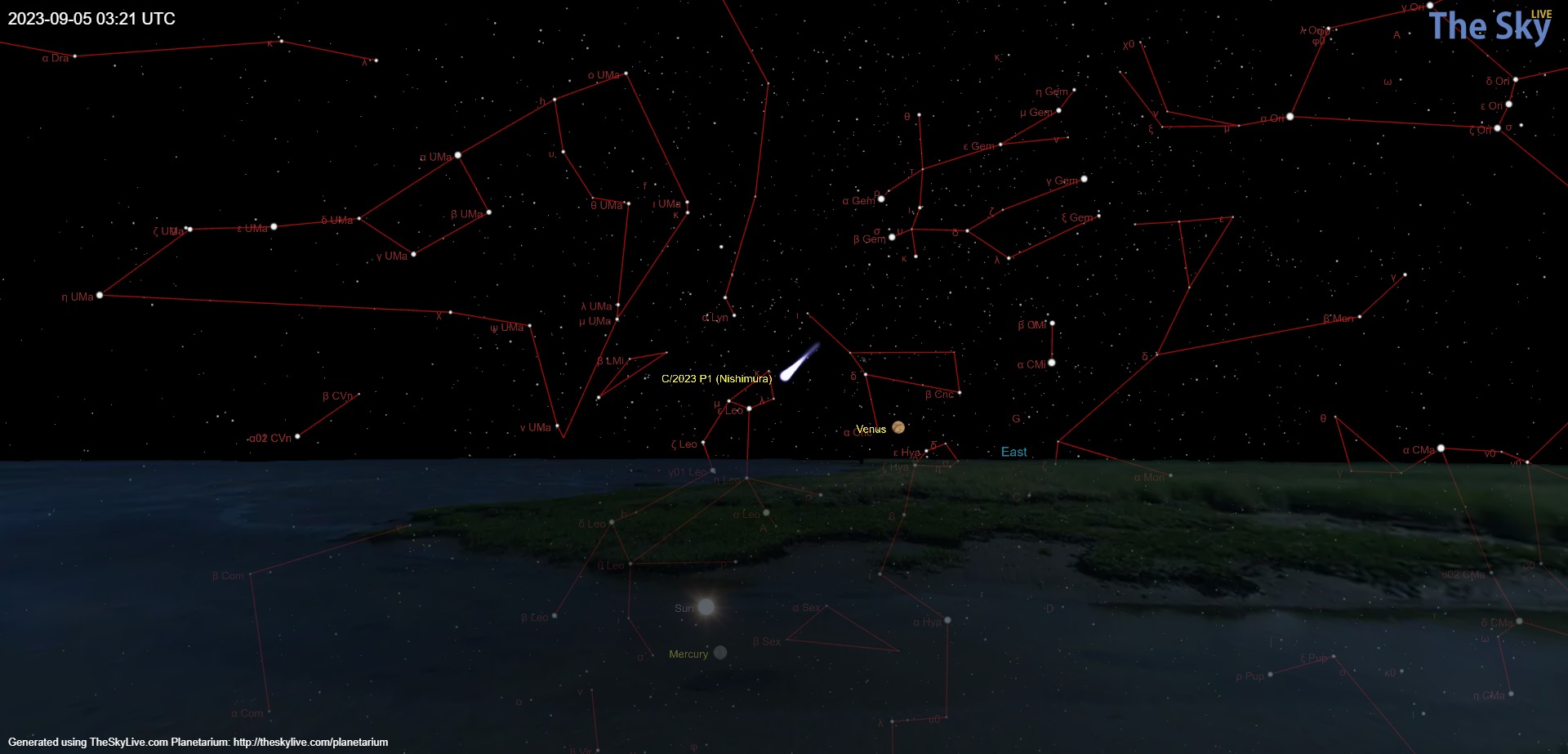Comet Nishimura is slowly but inexorably approaching its perihelion, the closest point to the Sun in its long orbit. The comet will get there on September 17, before moving back outward in its four-century motion through the heavens. As it approaches the Sun it is brightening, making it more and more visible.
The comet will be passing close to our planet next week, on September 12. Don’t worry – it will be at the extremely safe distance of 125.4 million kilometers (77.9 million miles). That is almost 84 percent of the distance between the Earth and the Sun. Astronomers thought that it would be easily visible to the naked eye, but it is currently inching towards visibility.
It will continue to brighten as it gets towards the Sun, but it will be closer and closer to our star in the sky, making it difficult to properly see it in its glare. So if you want to see it right now, you will need binoculars. And be ready for an early or very late start!
The comet is currently rising in the early hours of the morning in the East. Specifically, it is currently between the constellations of Cancer and Leo. It helps to be an early bird rather than a night owl, as one could use Venus around 4 am to find it. The comet will be slightly higher and slightly to the left of the “morning star”.

The position of the comet in the sky tomorrow morning.
The timing is certainly not ideal for most, but the green comet with its long thin tail is one of those spectacles that do not happen often. This is especially true for this comet, given that the next time it will be visible in our skies will be in early 2431.
The comet will appear in the evening sky following the perihelion but it will be just five degrees from the Sun, so even if it brightens a lot more it might not be easily seen.
The comet was discovered by Japanese amateur astronomer Hideo Nishimura and it received the official name of C/2023 P1 (Nishimura). This is the third comet discovered by Nishimura. The first two are C/1994 N1 (Nakamura-Nishimura-Machholz) and C/2021 O1 (Nishimura).
Source Link: How To Spot Comet Nishimura In The Sky In The Coming Weeks